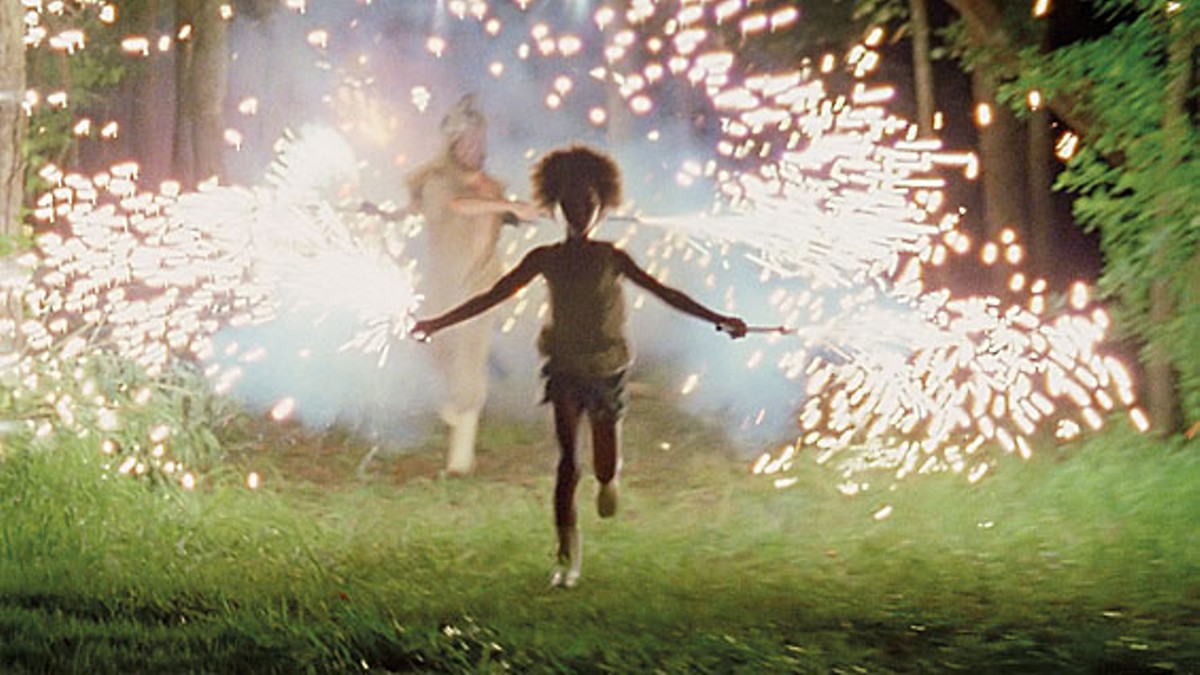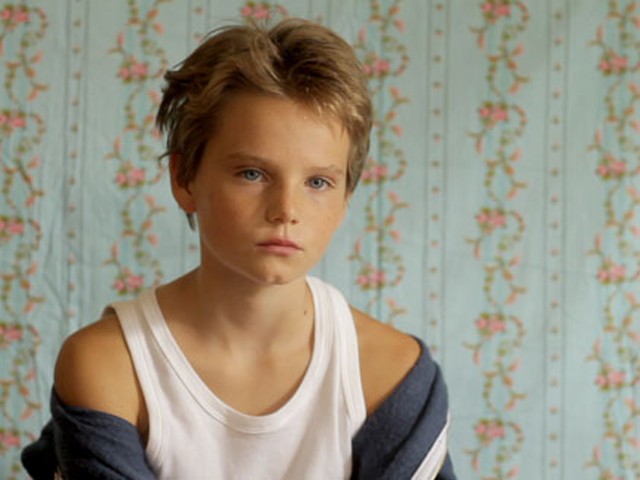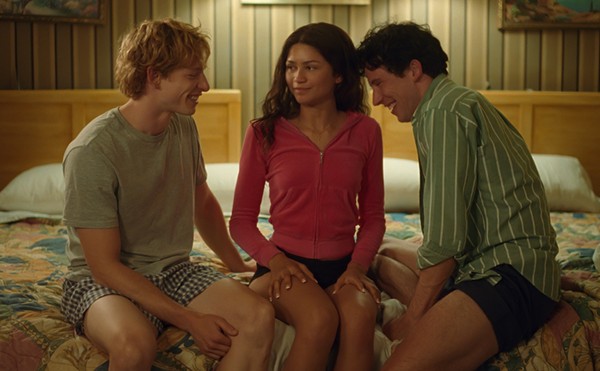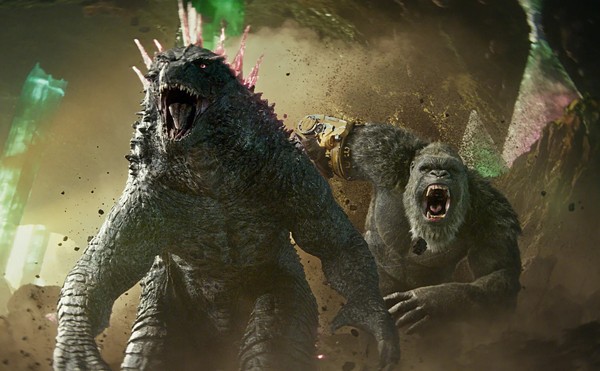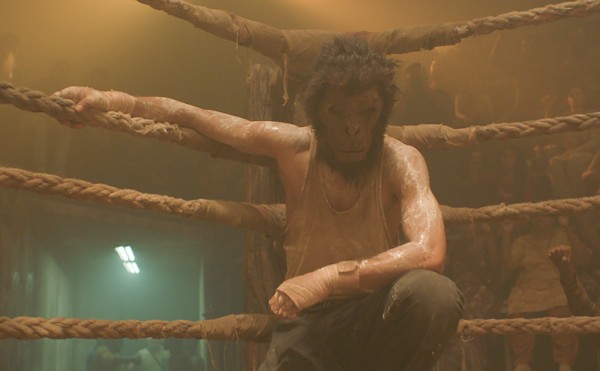It's potentially dangerous to look at the lineup of the Sundance Film Festival, which ended Sunday, as a reflection of the character of contemporary indie film, the collective American consciousness, or, well, anything. But there's no question that the 2012 edition of the festival was stuffed with films in some way touched by the psychological and practical fallout of economic crisis. Fiction and nonfiction features, whether broaching economics directly or indirectly, grappled with the difficulty of holding onto what you've got when everyone else is losing theirs. Many films suggested that the new American normal is to dream not of accumulation or advancement but of merely maintaining the status quo.
It was blatant in documentaries such as Lauren Greenfield's Queen of Versailles, in which a nouveau riche time-share mogul's gaudy lifestyle is threatened by the mortgage crisis. The struggle to stave off total wipeout is given more poetic and evocative treatment in Detropia, Heidi Ewing and Rachel Grady's city symphony documenting the devastating effect that the elimination of manufacturing has had on Detroit.
Whether or not it's a product of austerity, many of the narrative features I saw at Sundance took on the shaky-cam "immediacy" once primarily associated with documentary (and now a mainstream narrative tactic commonly employed by sitcoms plumbing for laughs by presenting the ridiculous as "real"). Sundance features like Smashed, starring Mary Elizabeth Winstead and Aaron Paul as a couple of young married alcoholics, or the humorless portrait of a self-absorbed musician I Am Not a Hipster essentially pull the same trick as the sitcoms without the jokes, appropriating the aesthetic to give their patently artificial situations, characters and dialogue the depth of tragic "reality."
In director Mark Webber's The End of Love, the actor (who was one of the exes in Scott Pilgrim) and his toddler son Isaac play actor Mark Webber and his toddler son Isaac in a loose narrative about the young father's struggle to juggle single parenting with his libido and showbiz ambitions. Some of the story elements injected to give the film structure ring false, but the ample material of Webber just interacting with his kid achieves the sense of real-life-on-screen that so many of the other movies at Sundance seemed to be shooting for. Sometimes drifting into cringe-worthy raw-nerve personal territory, Webber comes across as humbly self-aware — something of a feat in a film that could accurately be described as a Hollywood actor's overly cute home-movie vanity project — while little Isaac would give the kid performance of the year if there was any evidence that he truly understood he was acting.
That gulf between outward appearance and reality is the subject of the best narrative film I saw at Sundance, Simon Killer, Antonio Campos' followup to his directorial debut Afterschool (and last year's Martha Marcy May Marlene, which he produced). Like Martha Marcy, Simon is built around an attractive, enigmatic young person whose recent trauma (in this case, the titular college grad, played by Brady Corbet, comes to Paris in an effort to recover from a rough breakup) both muddles his vision and complicates the film's view of his behavior. Simon is a character study willfully obfuscating the "truth" about its main character and a psychological thriller only offering a misleading glimpse into a psyche.
Simon claims early in the film to have been a neuroscience student specializing in the way the brain relates to the eye, and the gorgeous cinematography is constantly drawing attention to the way eyes — and cameras — work, with extreme focal changes amplifying the tension between foreground and background and pulsing color-field abstractions acting as transitions. Slowly revealed as a pathological liar, Simon might or might not be an expert in the science of perception, but he shows particular aptitude for perception as it relates to women, who repeatedly take him at face value and lose their ability to focus. Sensually rich, Simon Killer embodies cinema's power to manipulate the eye and the brain.
That what we see is up for infinite interpretation is borne out by the most innovative nonfiction film at Sundance, Room 237, filmmaker Rodney Ascher's brilliant work of alternative film criticism — and a critique of criticism — that explores the conspiracy theories surrounding Stanley Kubrick's The Shining. Self-proclaimed experts, who are heard but not seen, make the case that the film is loaded with hidden allusions to the Holocaust and the genocide of the American Indians, and includes Kubrick's implicit admission that he "directed" the Apollo 11 moon landing. Ascher refrains from his own verbal commentary and from pushing toward a single conclusion. Instead, he collages imagery from the film (and from other films, most notably Kubrick's Eyes Wide Shut) against the litany of interpretations offered via voiceover on the soundtrack, allowing the viewer to play filmic detective, sorting out the reasonable from the crackpot based on our own experience of the movie.
Disappointments? There were a few, including the uncontested "hit" and Grand Jury prize winner of the festival, Beasts of the Southern Wild, Benh Zeitlin's thematic sequel to his much-acclaimed 2008 short, Glory at Sea. Billed as wholly original, the film is in fact an uneasy mashup of Where the Wild Things Are, The Tree of Life and Trash Humpers. Set in a magical ghetto island of outcasts floating off the southern coast of Louisiana, the movie is all fairy-tale, fantastic wonder all the time. It stumbles in its attempts to anchor that wonder in something real: The film's central apocalyptic storm, its prehistoric beasts (both brought on by global warming), and its subsequent detour into a mainland displacement camp, make the Hurricane Katrina metaphor painfully literal. And yet it's the ultimate example of Sundance 2012's gallery of crises.

